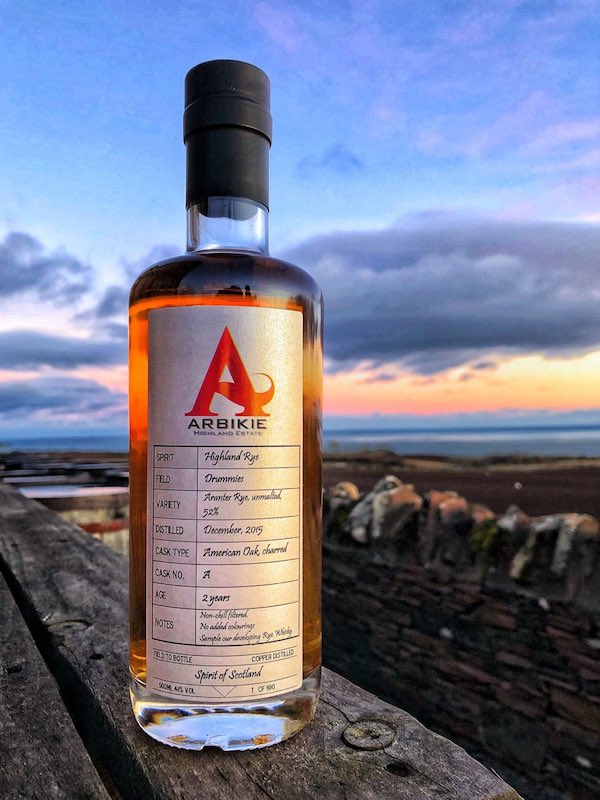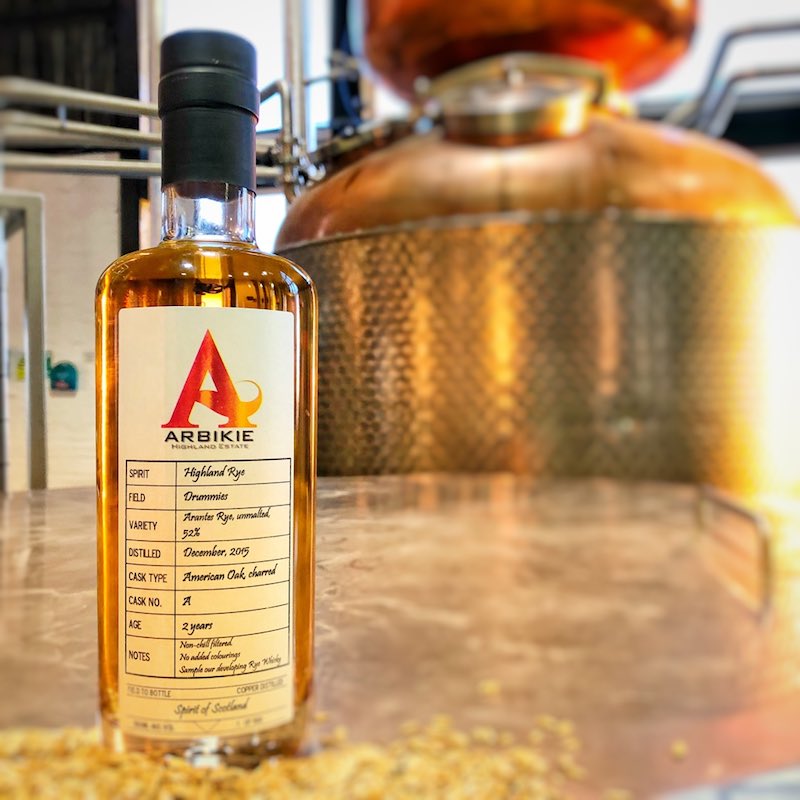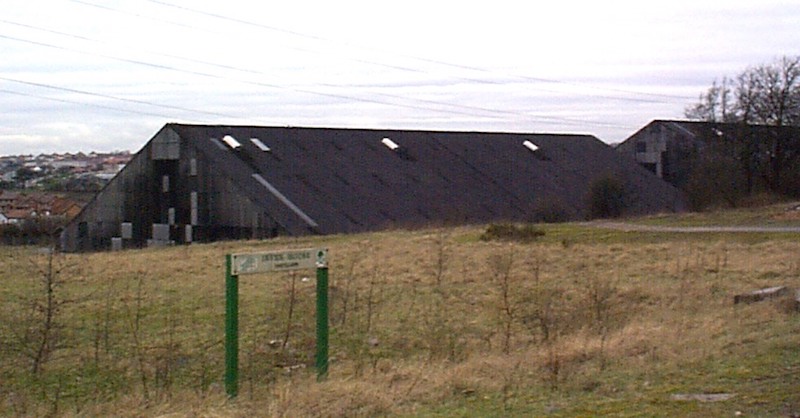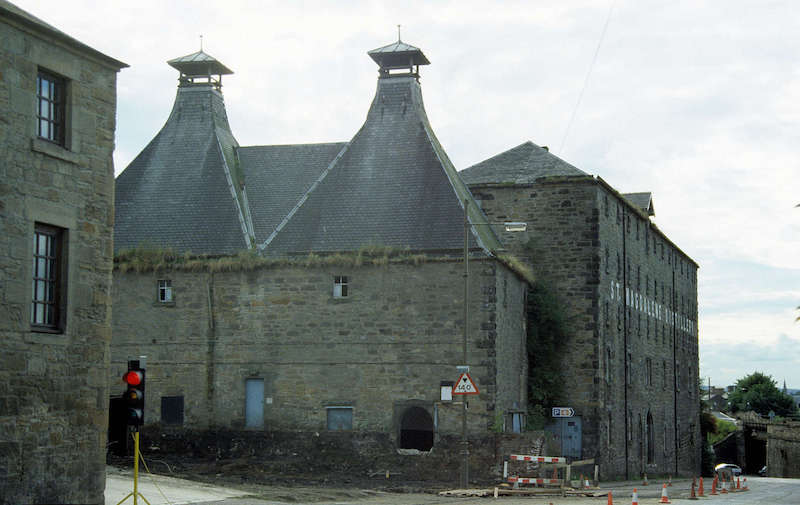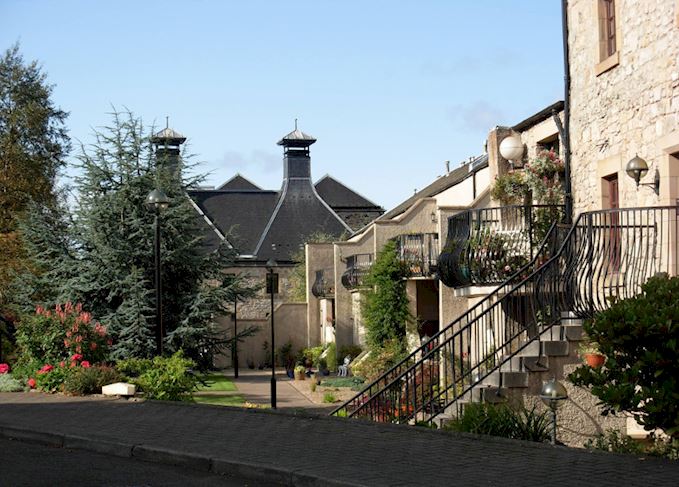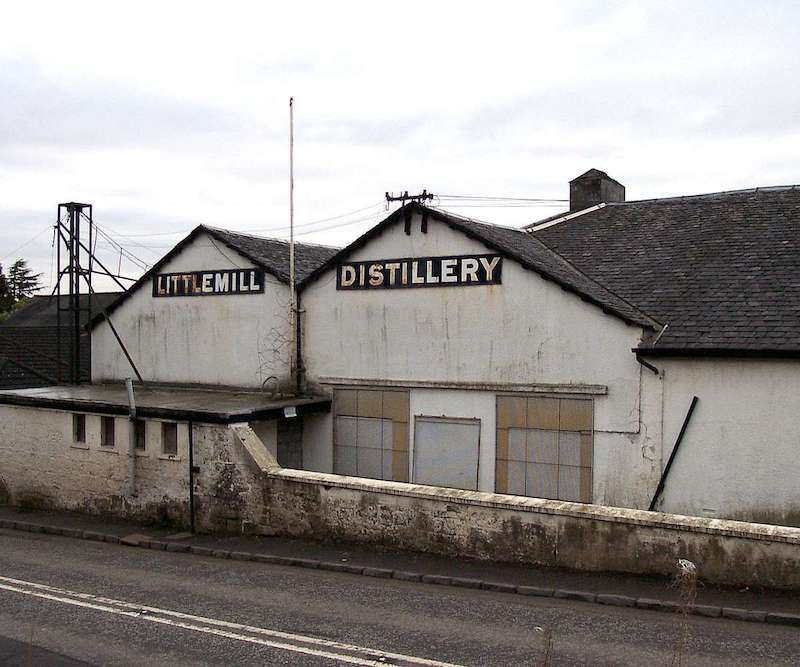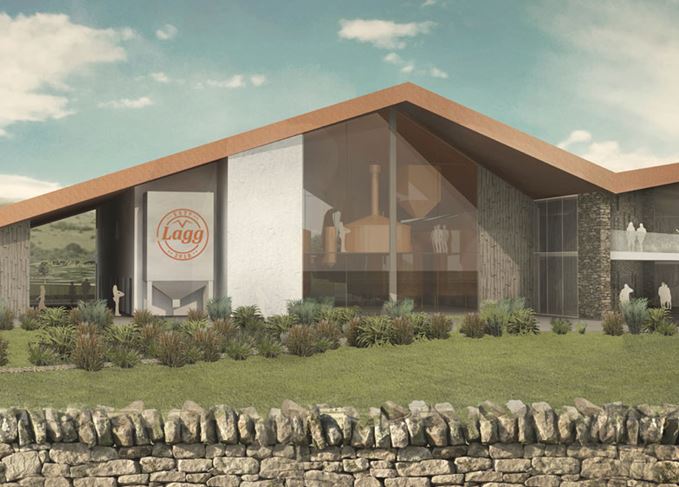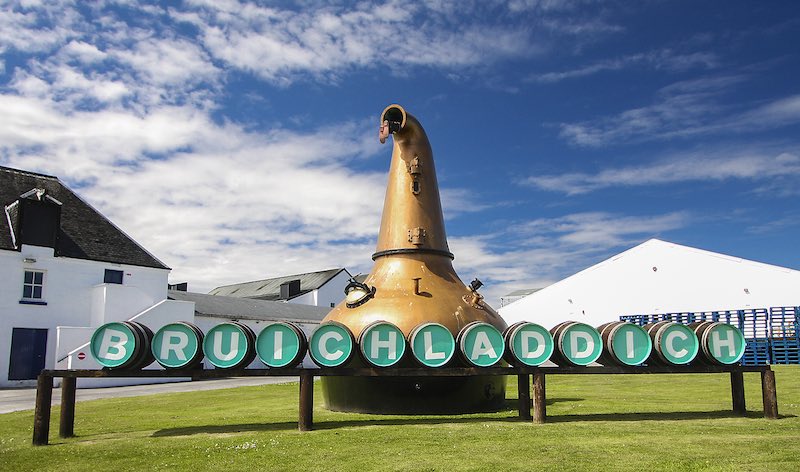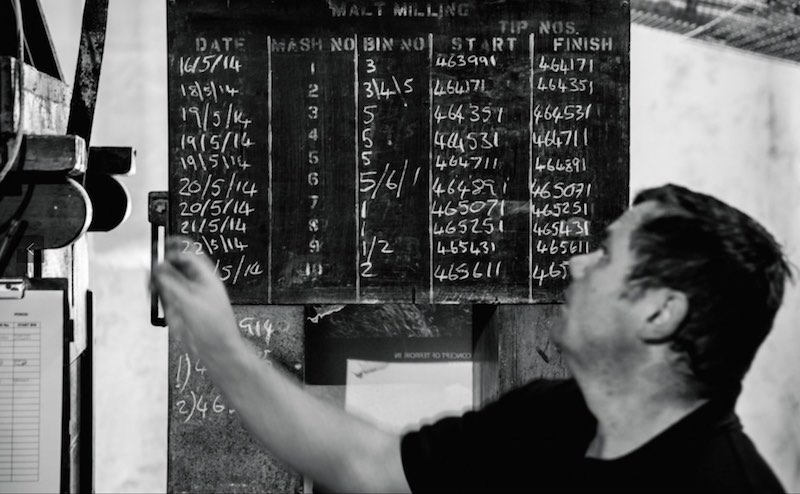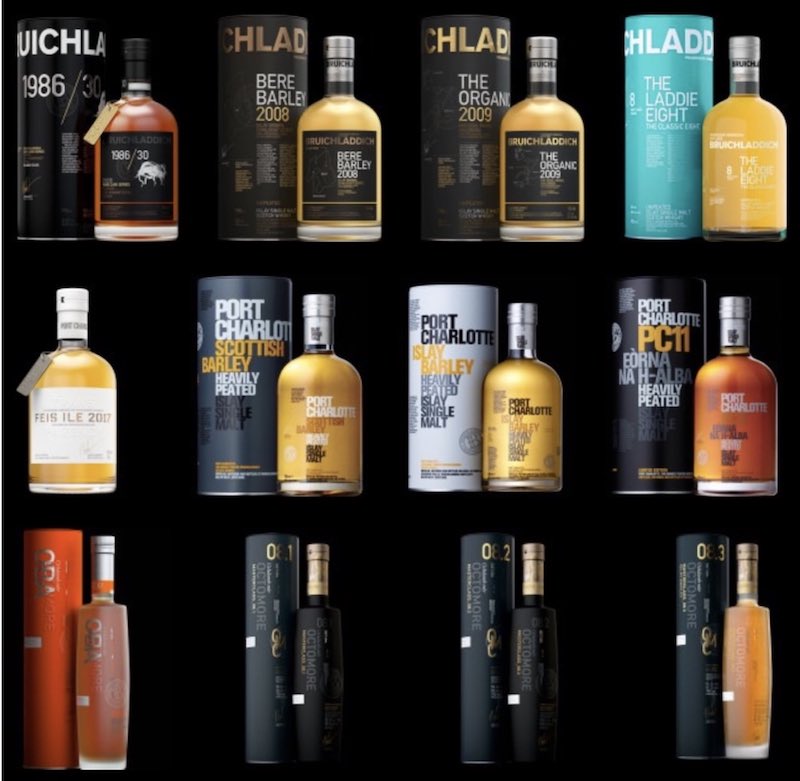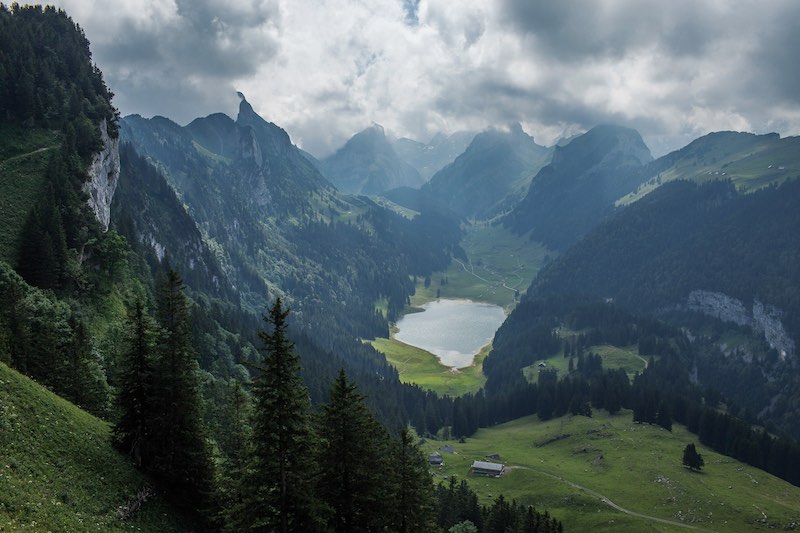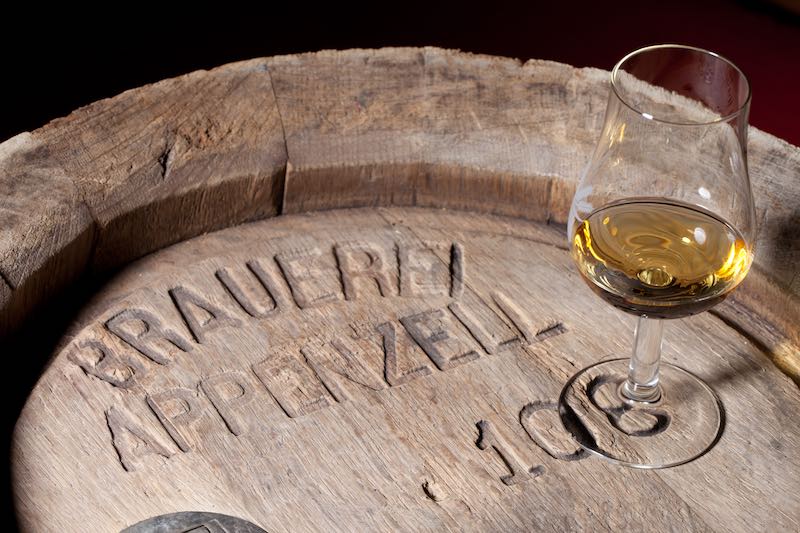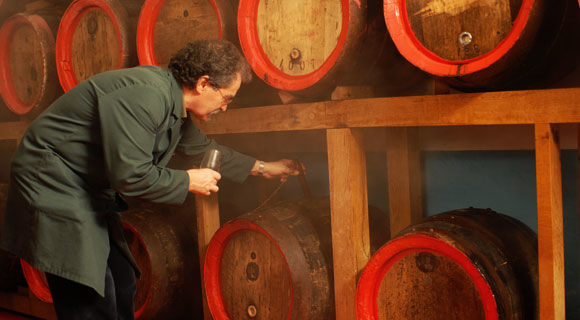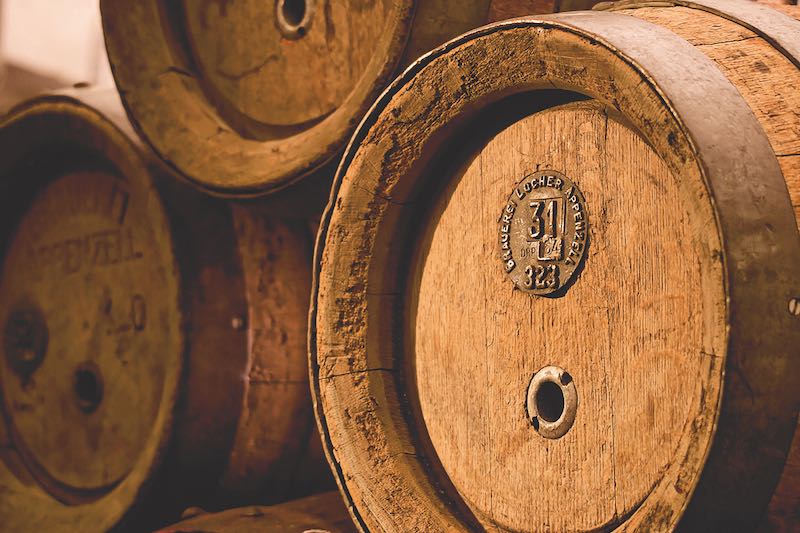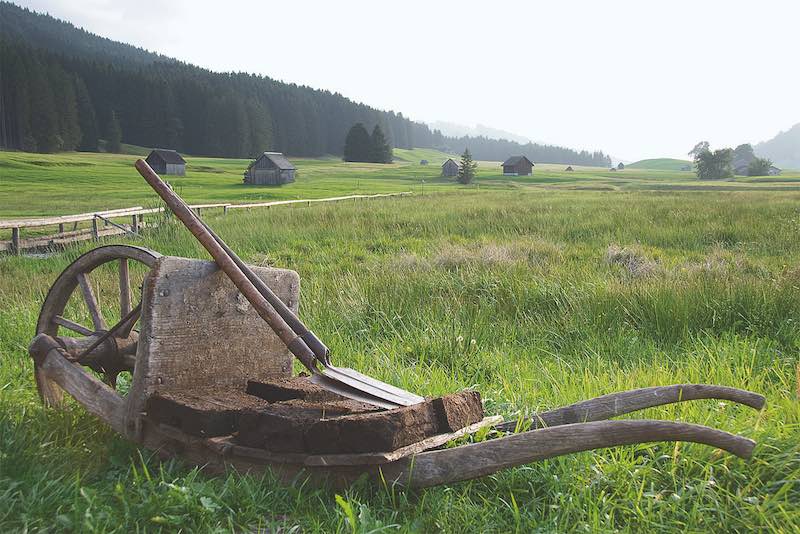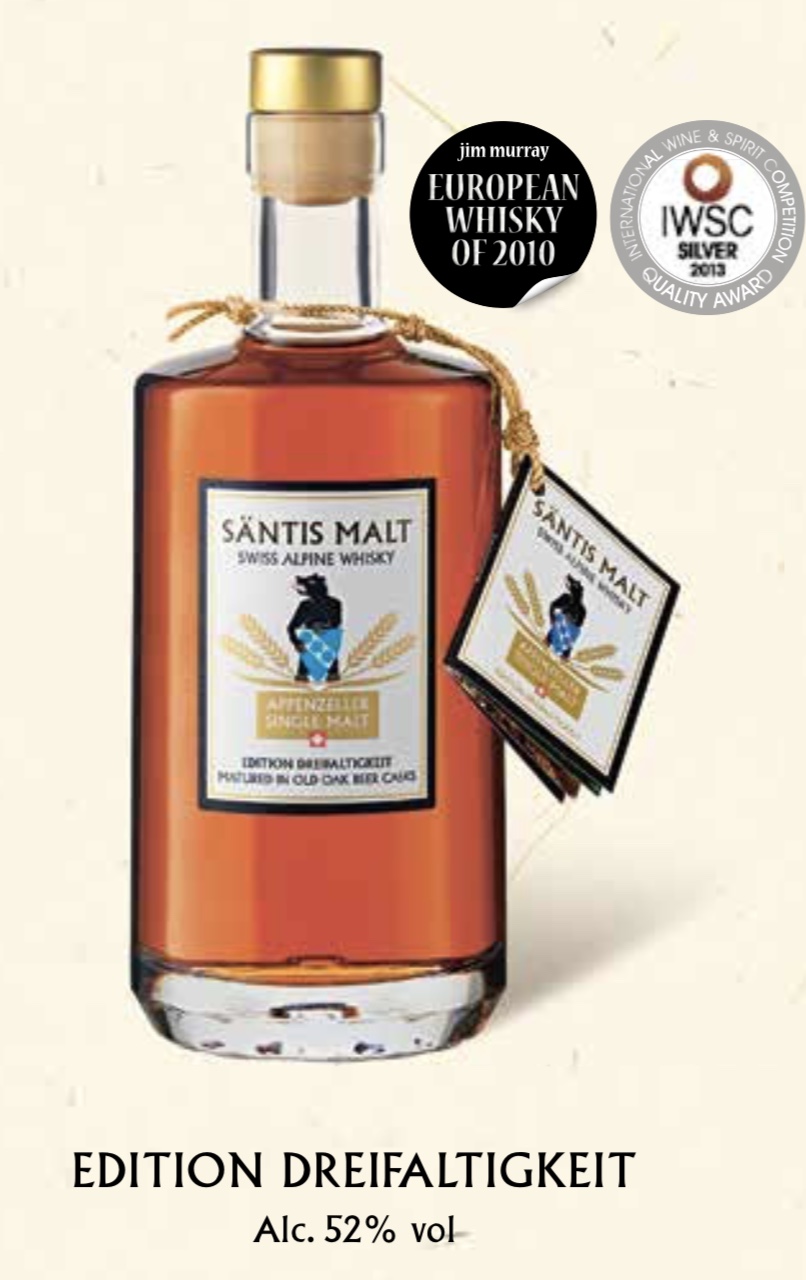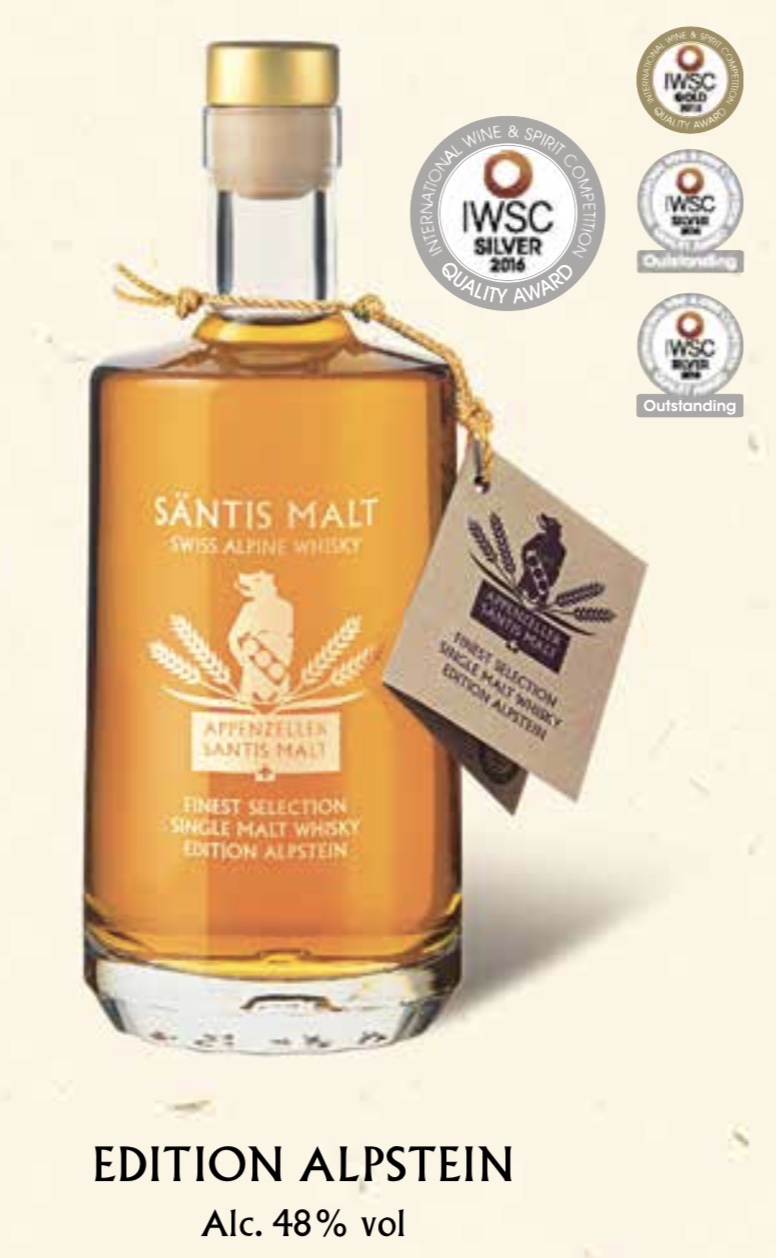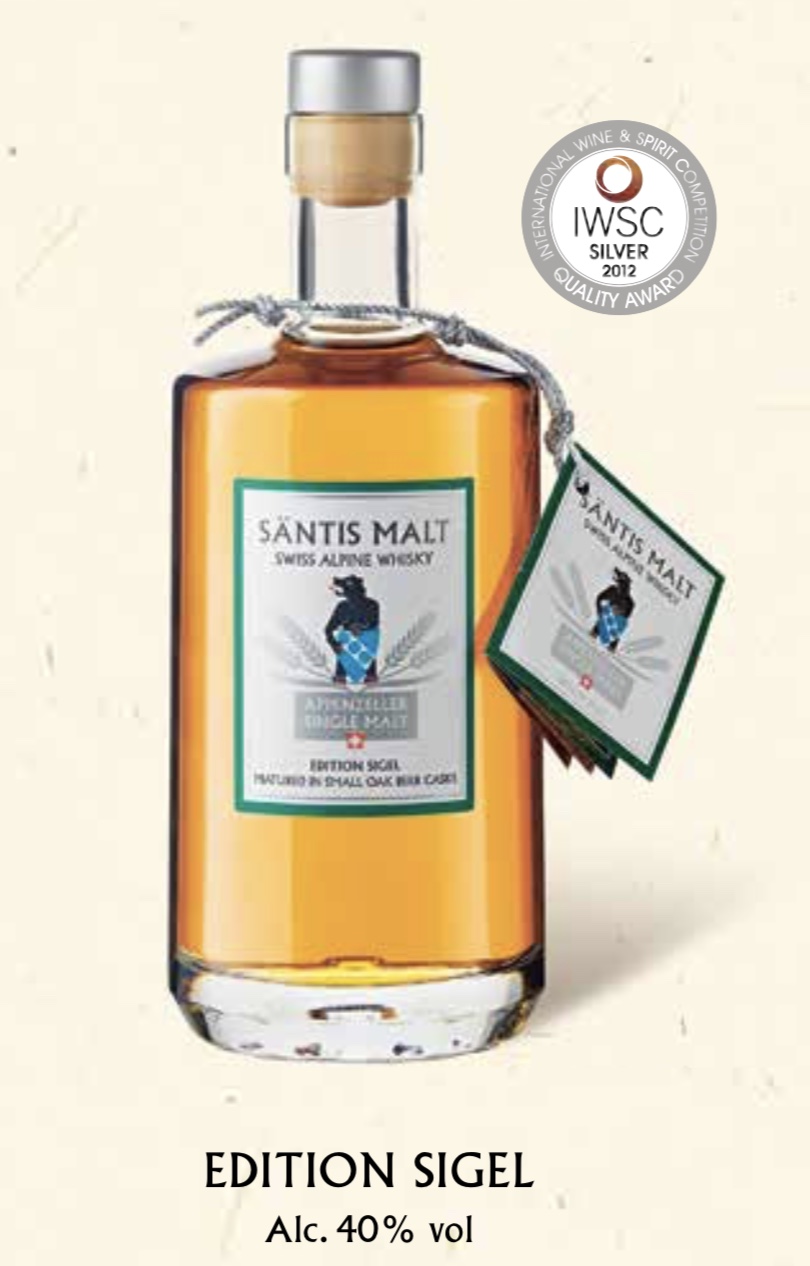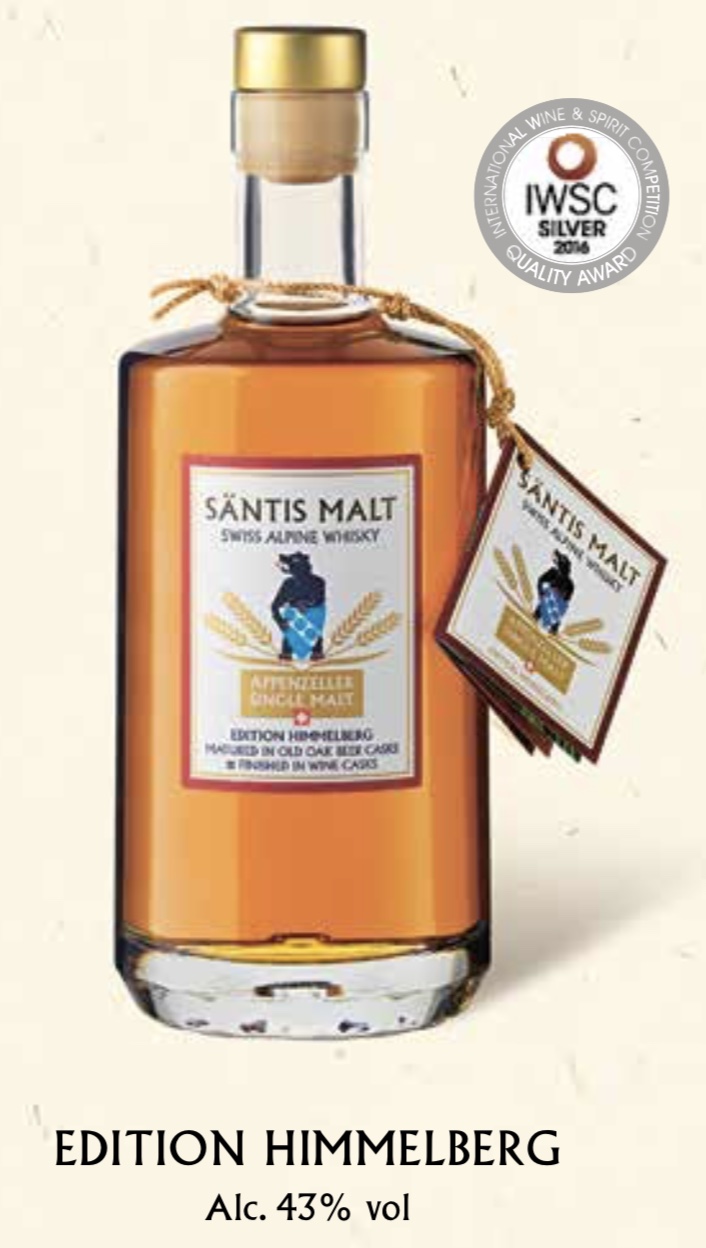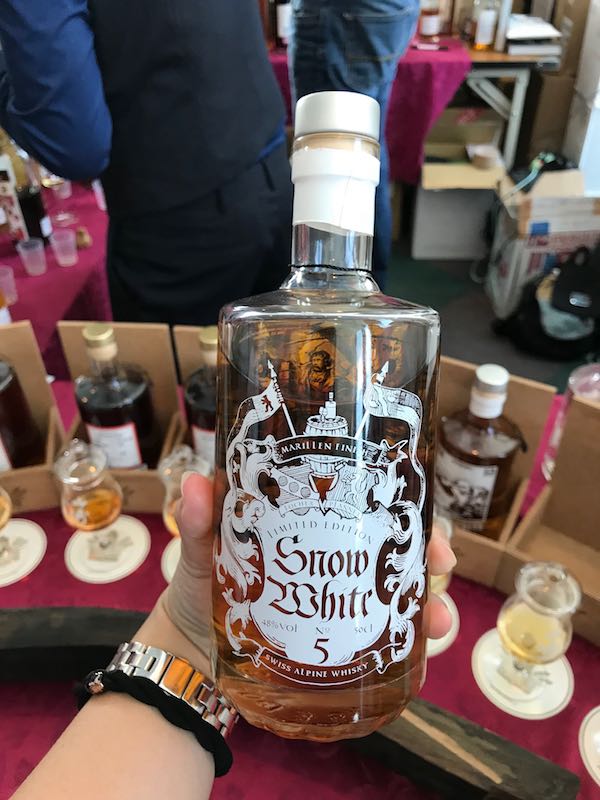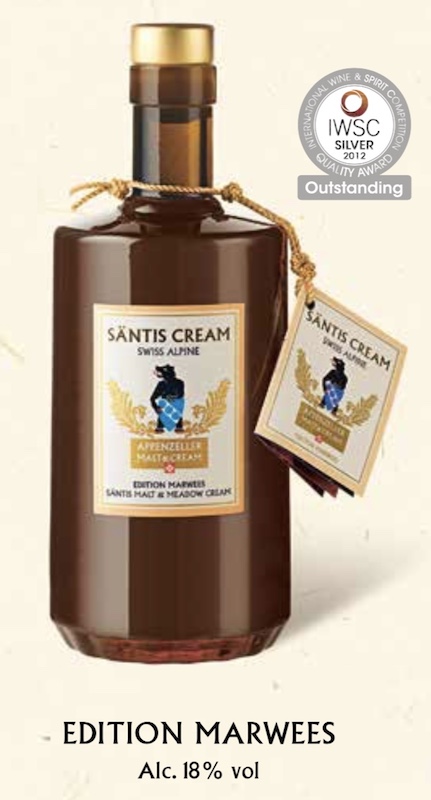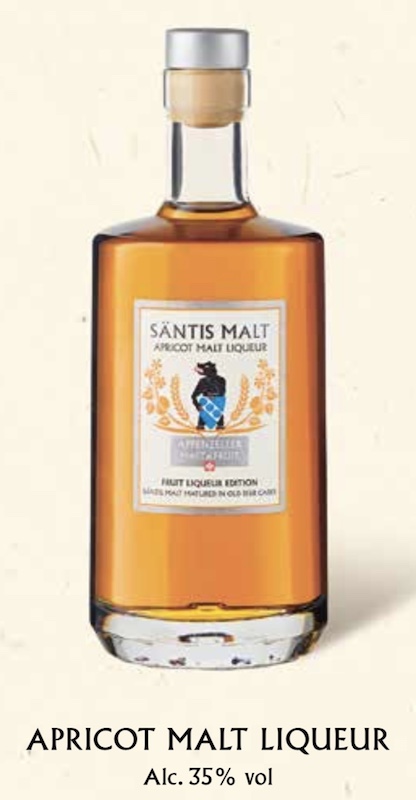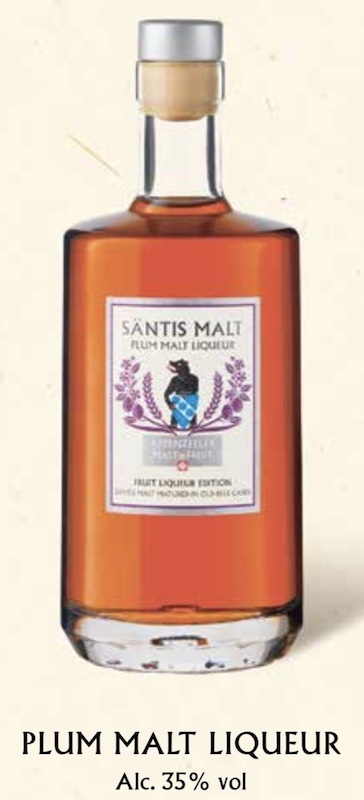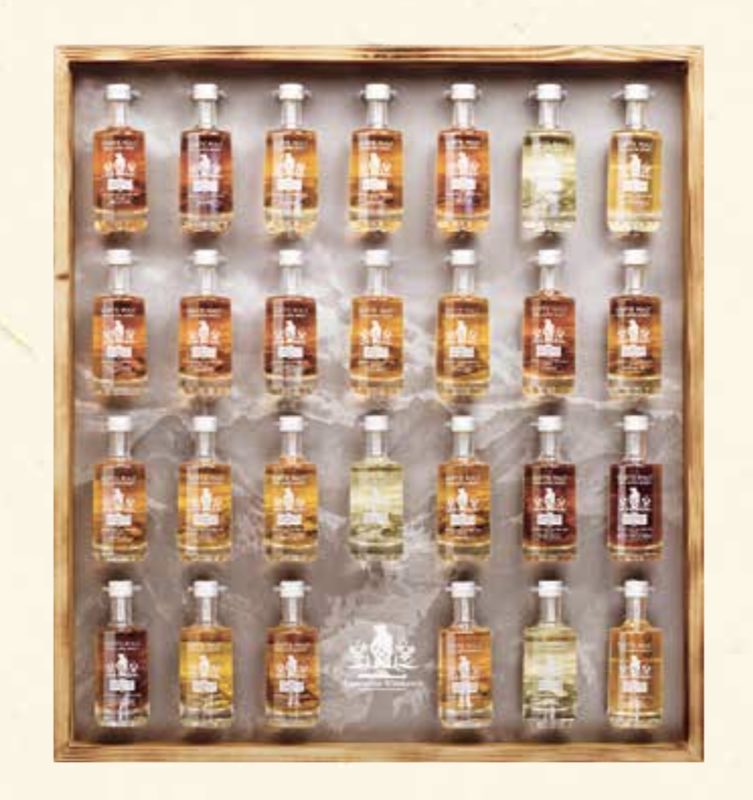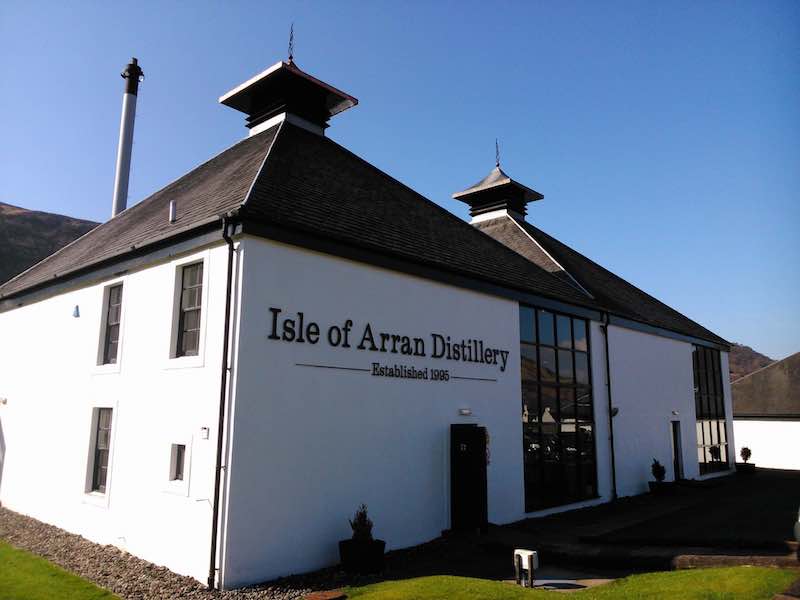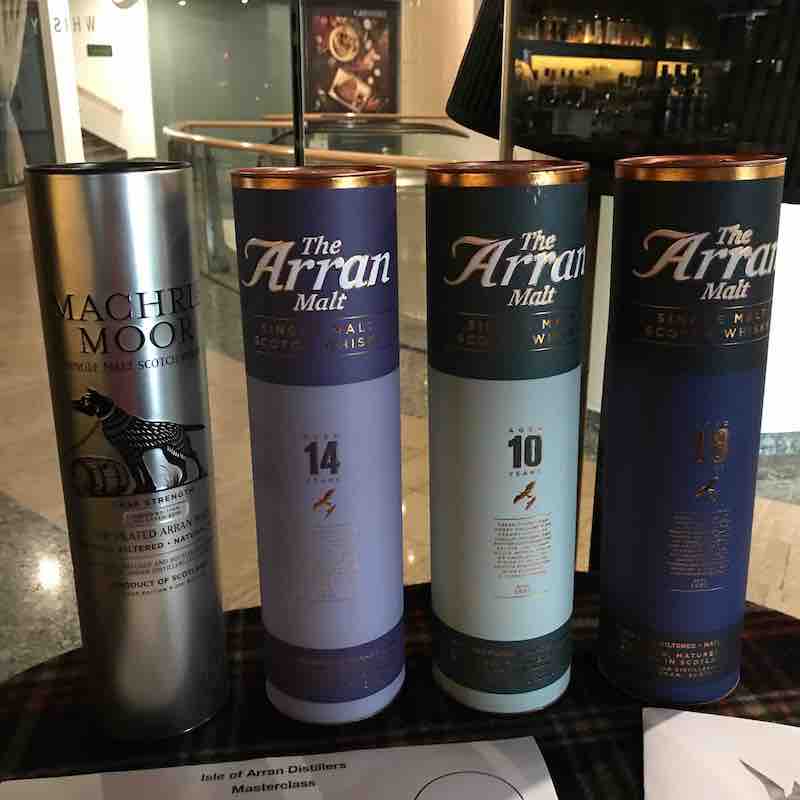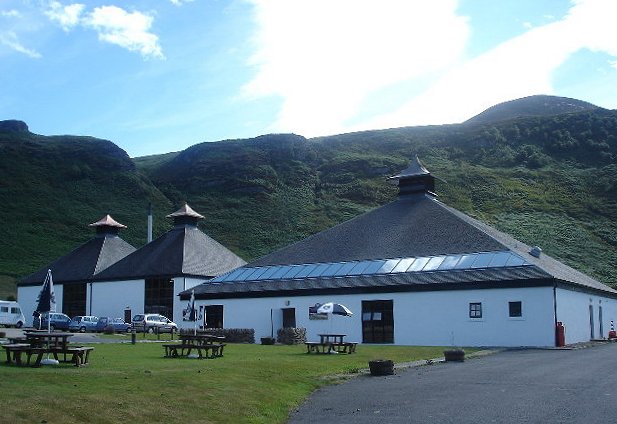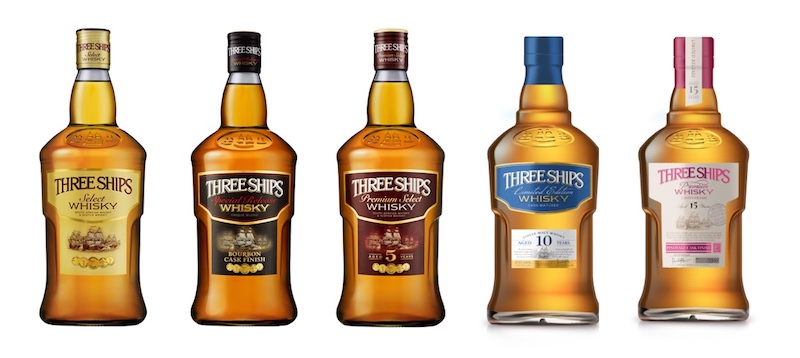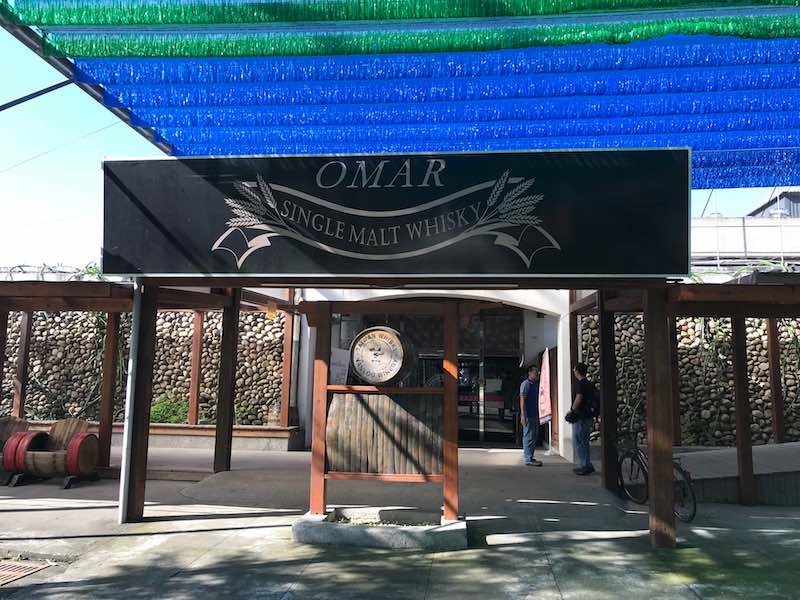
The entrance of Omar Single Malt Distillery
Nantou Winery makes Omar Single Malt Whisky in Nantou, Taiwan. It is a combined facility in which they make whisky, Gao Liang Jiu (which is a type of “bai jiu”) and Taiwan oak-aged umeshu. For the sake of easy references, we will call Nantou Winery as Omar distillery whenever we are speaking of whisky-making in this article.
History of Nantou Winery
The history of Nantou Winery started in 1978 where the winery focuses on making wine, blended whisky (Scotch + Taiwanese), brandy, umeshu and other fruits liqueurs. They did not have single malt whisky at all. The winery was owned by the government of Taiwan and operated as a public company.
History of Omar Single Malt
Omar Single Malt was born in 2007. The reason for Omar Single Malt was a humanitarian one – in 2007, the farmers in Taiwan experienced a massive harvest in barley which they have nowhere to sell to. In those days, Taiwan was facing exportation issues, and the farmers found it difficult to sell their harvest overseas. In an attempt to help the farmers, the government started Omar Single Malt as a brand and bought up all the barley from the farmers. At the same time, the government also started buying equipment for single malt whisky distillation. One of the newly-hired distillers was also sent to Scotland to learn the art of distillation necessary for Taiwanese single malt whisky.
By 2008, the distillery started distilling whisky new-make for the Omar brand. The graduated distiller who went to Scotland came back to Taiwan and taught his fellow distillers the art of making whisky. The distillers placed the new-make into both sherry and bourbon casks of varying shapes and sizes.
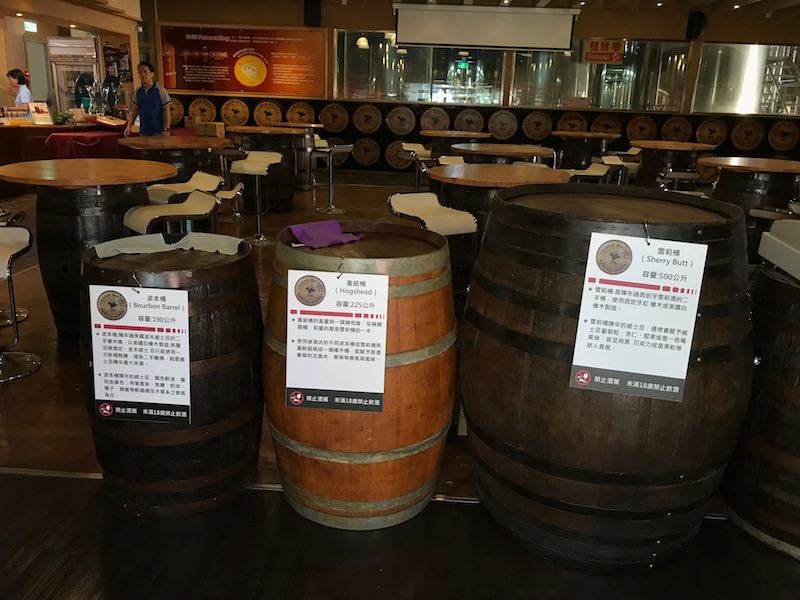
From left to right: Bourbon Barrel, Hogshead and Sherry Butt
Omar Whisky
Due to the climate of Taiwan, Omar has a high angel share of 6-7% during the maturation period. The typical maturation period is 4 to 5 years. Omar strictly compelled to the Scottish rules of a minimum three years before the liquid becomes whisky. While the whisky did not mature in the barrels for very long, the higher temperature encourages the liquid to interact with the oak in higher intensity, making the liquid aged faster. As a rule of thumb, the distillery counts a year in Taiwan as equivalent to 3 years in Scotland where the temperature is consistently lower.
Omar whisky did not have an aged statement as yet. Their core range includes the regular bourbon and sherry NAS whiskies. The newest single malt whisky in the Omar core range is a peated whisky. The peat is taken from Taiwan and is pleasantly aromatic. Besides that, Omar also has single cask, cask strength whiskies
The birth of the first Omar Cask Strength Whisky
In 2013, two cask strength whiskies matured in a bourbon barrel and a sherry butt respectively were born. Both whiskies received high acclaim from the local market. Omar distillery sent these whiskies for competition in the following year, and both of them did well in those contests. They received gold and silver in ISC and two silvers in IWSC in 2014 amongst others.
In 2015 and 2016, Omar received more awards. Most of them are from the Malt Manics Association (MMA) where Omar won the Best Sherried Whisky and Best Bourbon Natural Casks Whisky for both years. MMA also named Omar distillery as the Supreme Winner in 2015 and 2016.
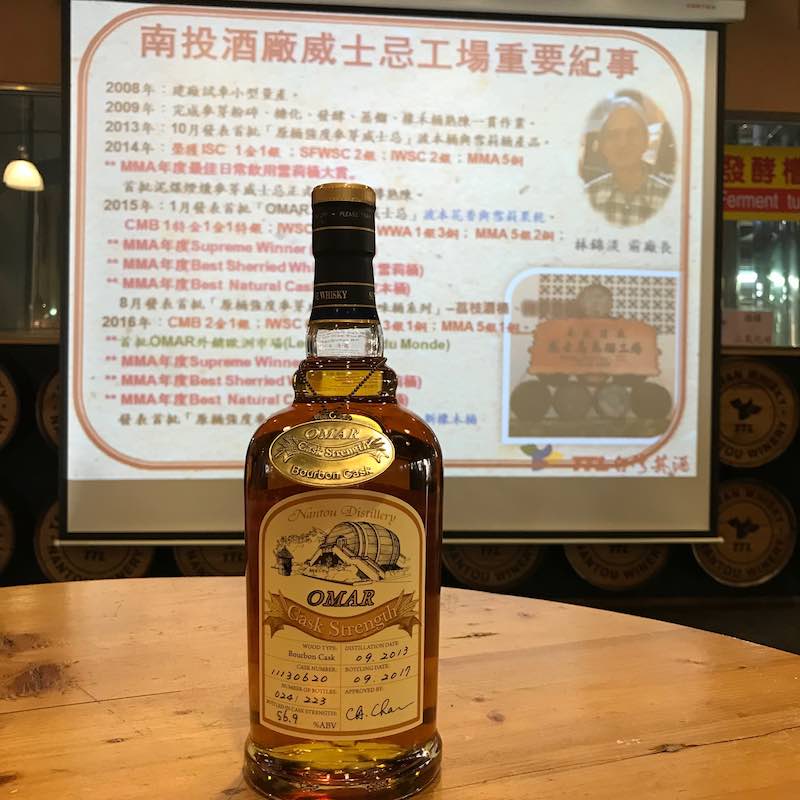
Omar Bourbon Cask Strength Whisky
Omar was indeed encouraged by these awards and the distillery strives to create consistent whiskies that everyone will love.
The Distillery Tour
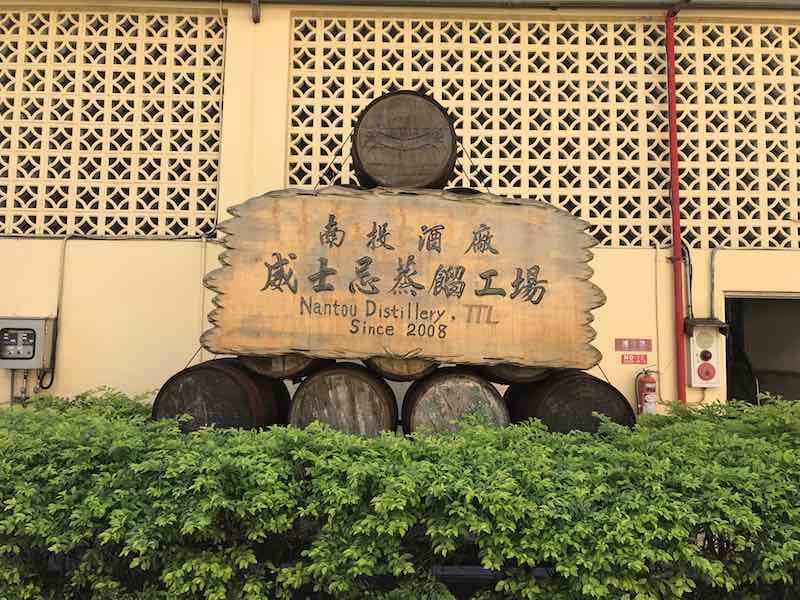
This decorative signage was a gift from the Government in 2008
The tour was fascinating in the sense that they brought us to see the warehouse before the rest of the processes. A large part of the reason was that our tour was a private tour, so the head distiller opens the warehouse just for our visit. To make things easier for him, we were brought to the warehouse first.
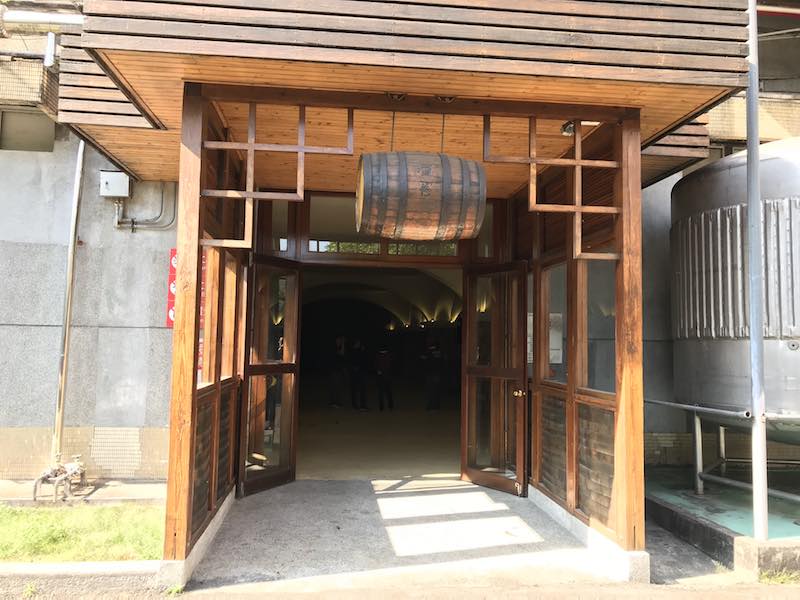
Entrance to Warehouse No 1, the only warehouse opened to visitors
Upon entering the warehouse, we felt the immediate drop in temperature. We understood from our guide that the warehouse is opened only on specific days when they conduct distillery tours to large groups of pre-booked visitors.
-
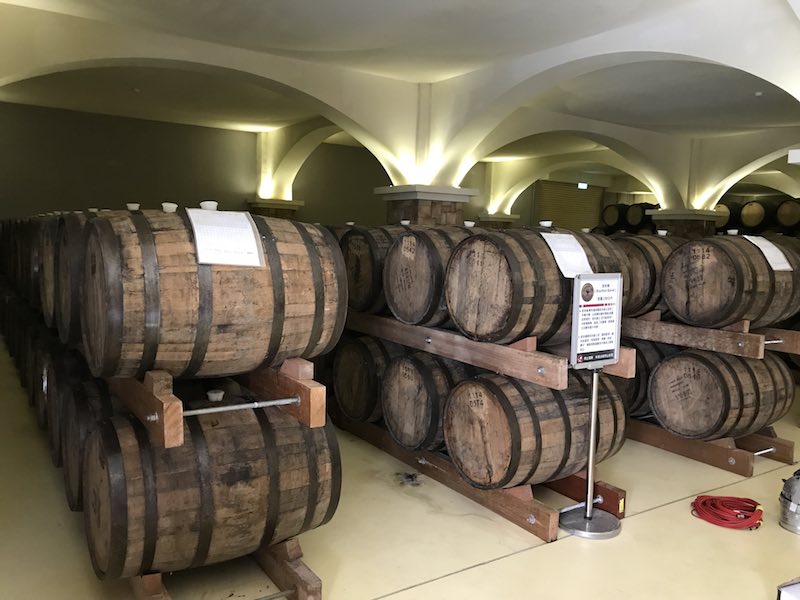
-
Bourbon Casks
-

-
Bourbon Casks
-

-
Sherry Butts
-

-
Solera Casks
The warehouse is cleaner and brighter than the ones that we visited in Yamazaki and Hakushu. Perhaps it was due to our impromptu visit, or maybe it was because they are repairing the air-conditioning in the warehouse. It is a small warehouse, and we suspect that much of the stocks here are likely for their blended whiskies instead of their single malt whiskies.
Casks Repairing Work
Interestingly, Omar does cask repairs on its own. Our guide shared that the distillery tries to be as self-sufficient as possible due to the lack of facilities outside the distillery to support the whisky industry in Taiwan. He brought us to the back of the warehouse where we saw a few rows of broken casks.
-
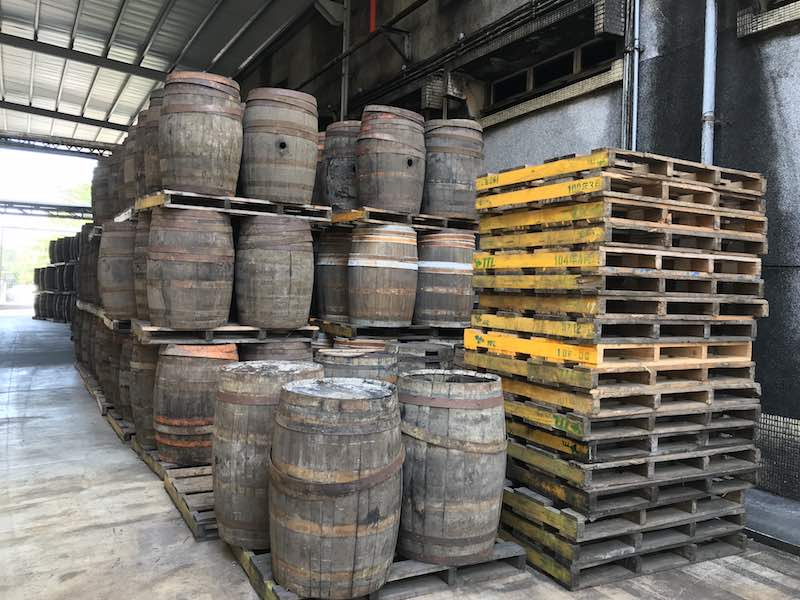
-
Broken Casks
-
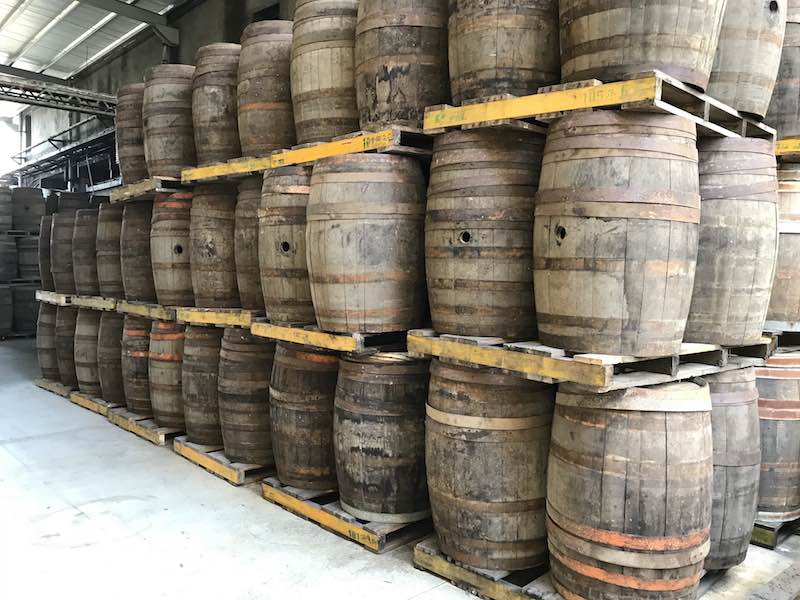
-
Extensive Damaged Casks
-
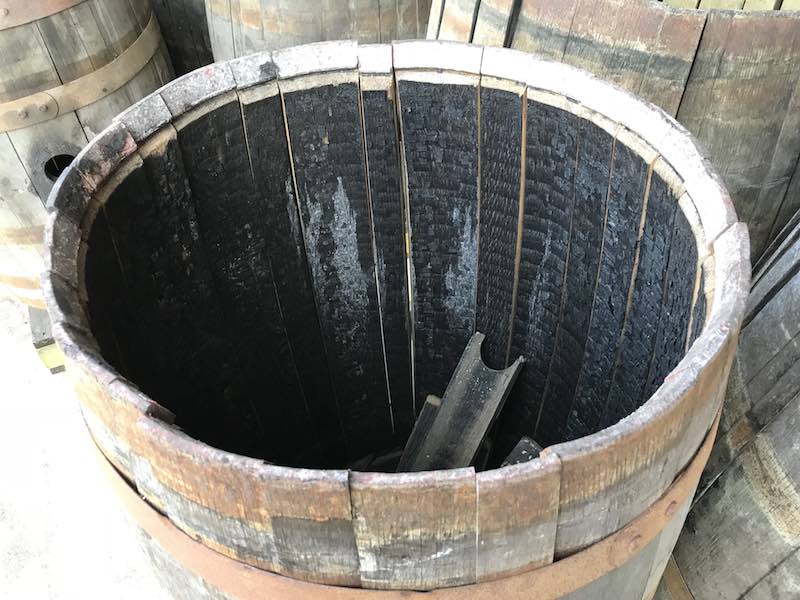
-
Uneven Cask
-
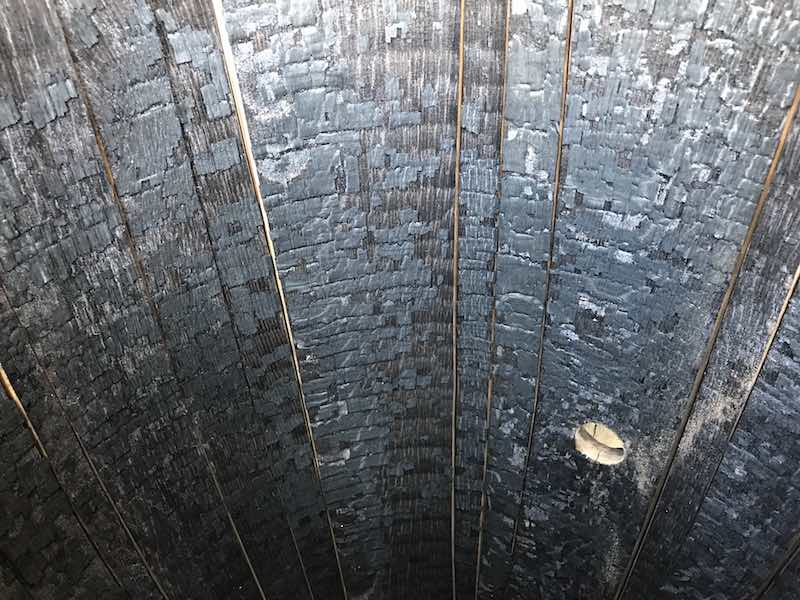
-
Charred Insides of Bourbon Cask
We found the broken casks rather fascinating. Our guide told us that the casks left out in the sun are those classified as “beyond repair” and these would be re-fashioned into decorative tables for the home and whisky bars in Taiwan. We had the chance to look at an open cask, and to our surprise, we can still smell the vanilla fragrance from the charred insides! Geek Flora was so excited that she took so many pictures of that blackened inside. ><
Grinding, Mashing and Fermentation
Next, our guide brought us to the barley storage and grinder. We understood from him that Omar only uses Scottish or English malted barley for their fermentation. The malted barley is imported and left in a large storage area. When the distillery wants to make a new batch of new make whisky, an automated transporter belt transports the malted barley to the grinder which grinds them and then fed them to tubes that lead to the only mash tun in the distillery. Fermentation takes 72 hours, and they use whisky yeast from France. 250,000kg of barley yields about 100,000 litres of new make in one cycle. The water source is the underground water from the nearby mountains.
-
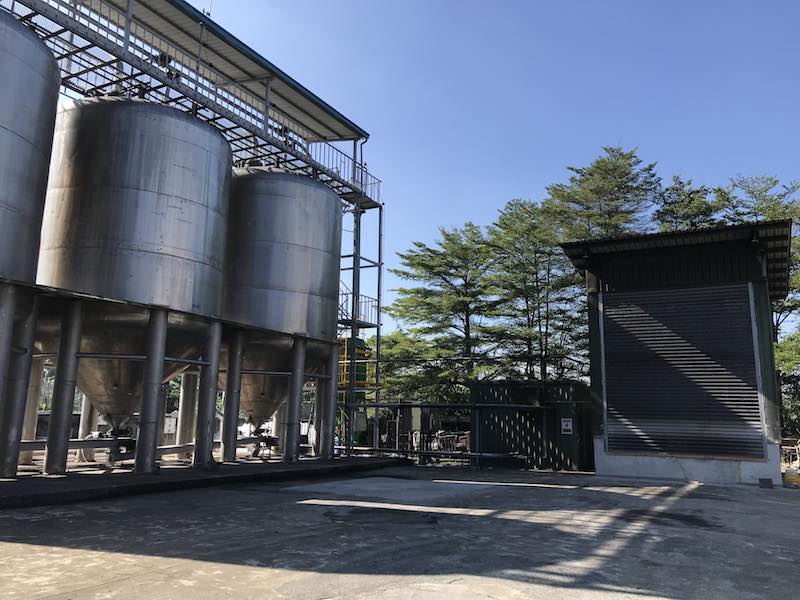
-
Storage and Grinder
-
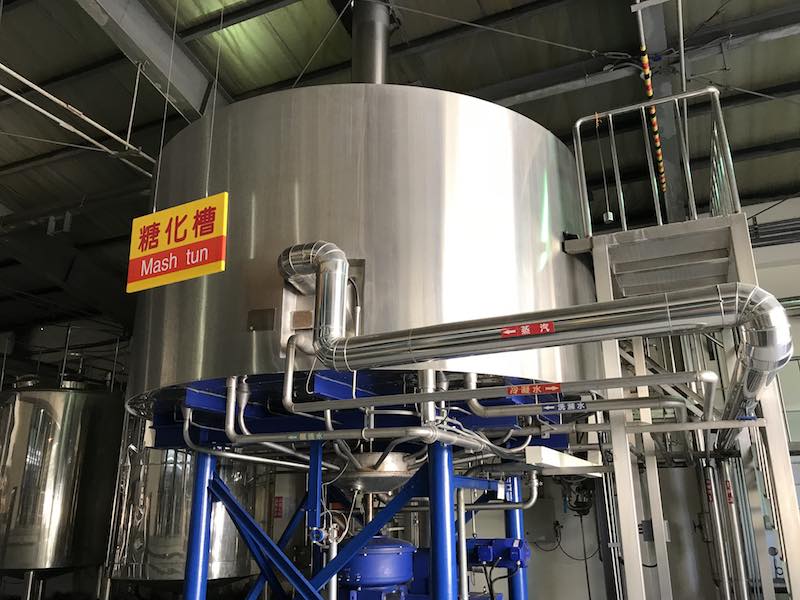
-
Mash Tun
-
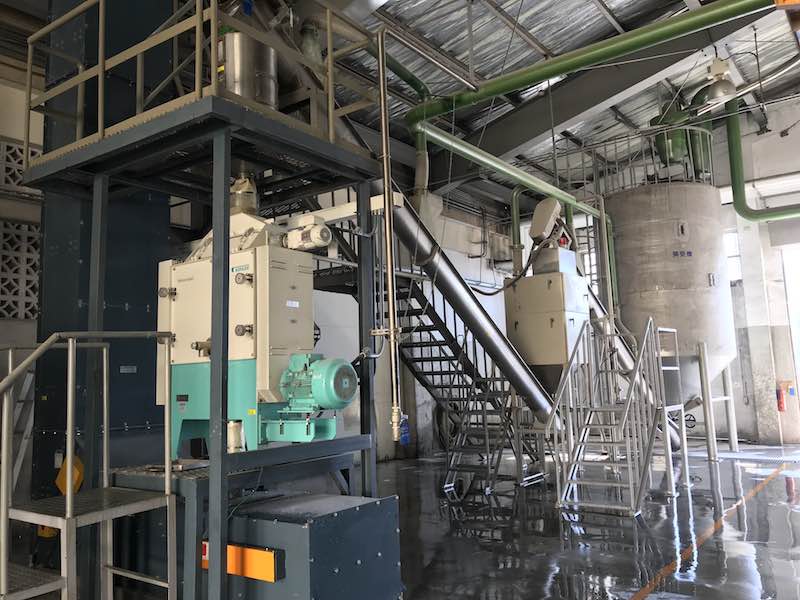
-
Fermentation
It was an eye-opener to look at how Omar mimic its fermentation process after Scotland even when they have structural challenges in their existing building. In the name of innovation and creativity, Omar fashioned a new method of delivering the wort to the fermentation washbacks that they own. While the delivery is different, it is technically mimicking the Scottish way. That is impressive!
Distillation
Omar has four pot stills that were shipped from Scotland back in 2007. ≈ Their double distillation process makes use of these pot stills. Pot stills 1 and 2 are in-charge of the first distillation process while still 3 and 4 are in-charge of the second distillation. The first distillation yields a new make with 30% abv and the second distillation increase the alcohol content to a range of 60 to 75%. After distillation, the new make goes into the spirit safe where the heart of the distillate is separated. The rest of the rejected liquid goes back to pot stills 1 and 2. The process of using only the spirit-centre of the distillate ensures the quality of the new make. This quality control is vital to keep Omar whiskies consistent.
-

-
Distillation Room
-
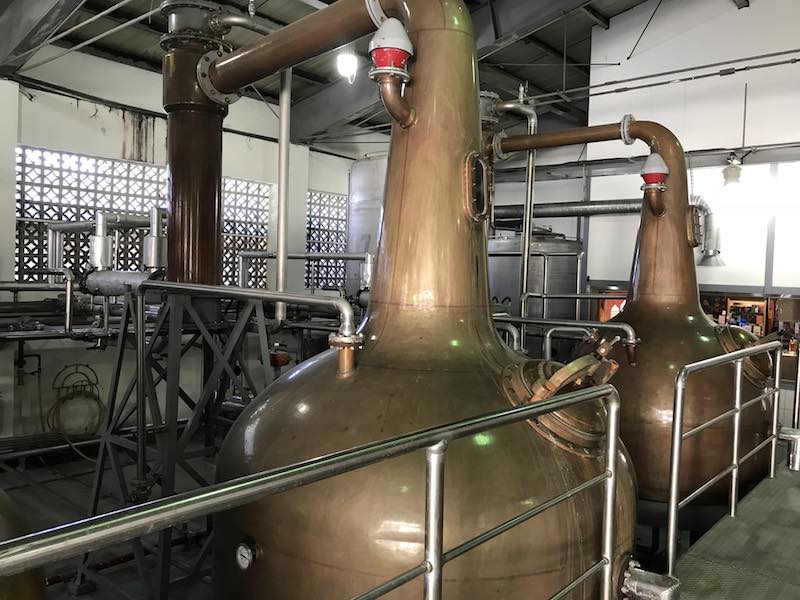
-
Pot Still #3 & #4
-

-
Spirit Safe
-
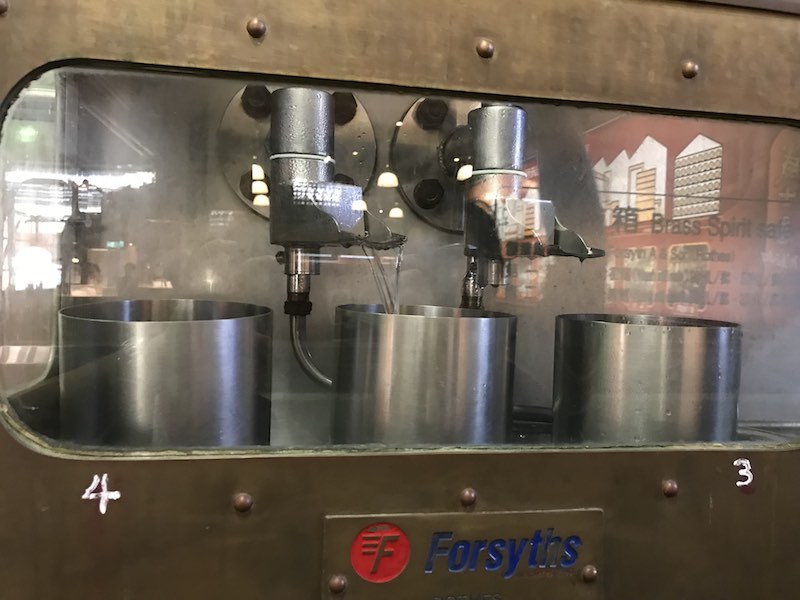
-
Running New Make
Omar Whisky Tasting Session
The distillery tour ended with the new make, and our guide ushered us back into the main hall where whiskies were already waiting for us at the bar. We had a total of seven whiskies. Yes, it was scary considering that we were drinking at 10.30 am in the morning, but it was worth the risk of getting drunk with a full day ahead of us!
First up, we had 4 whiskies that were part of our distillery tour package. They are the two regular Omar Single Malt Bourbon and Sherry Cask as well as two Cask Strength Omar Bourbon and Sherry Cask. The distillery also allows visitors to purchase other bottles for tasting at just 100 NTD per 20ml! That converts to less than SGD$4. Our guide treated us to their most popular Omar Single Malt Lychee Liqueur-Finished Whisky, and we purchased two other drams – the Taiwan Red Wine Finished and the Plum Wine-Finished whiskies.
-

-
Official Tasting Flight
-

-
Cask Strength Bourbon
-
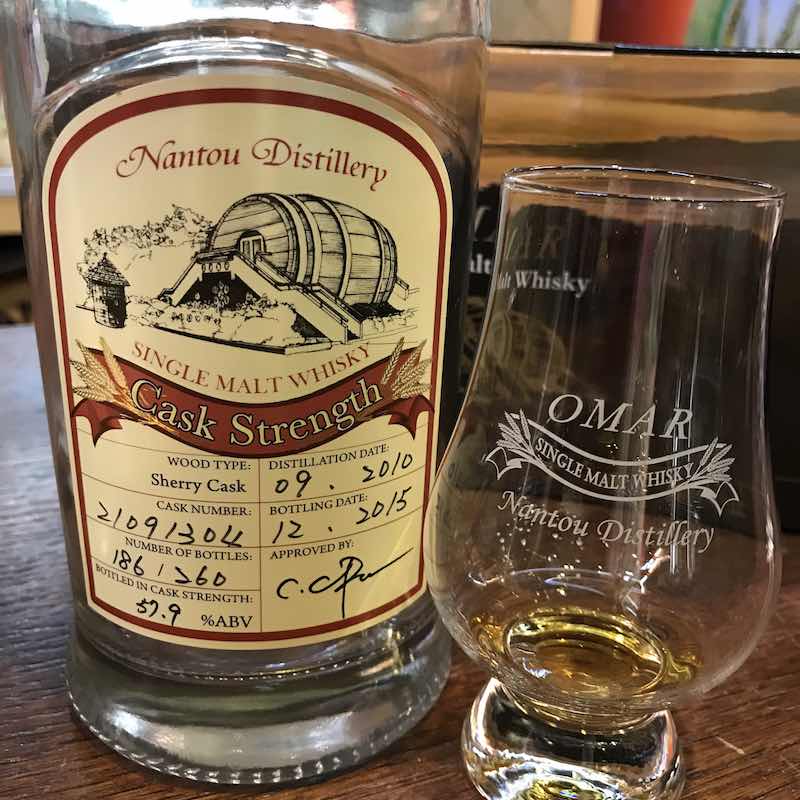
-
Cask Strength Sherry
-
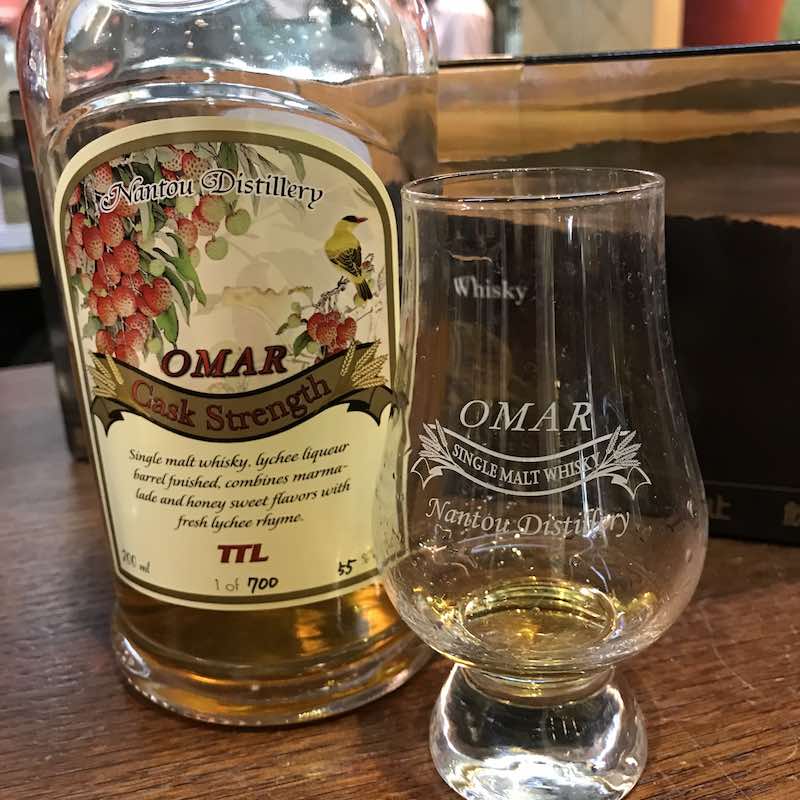
-
Cask Strength Lychee
-
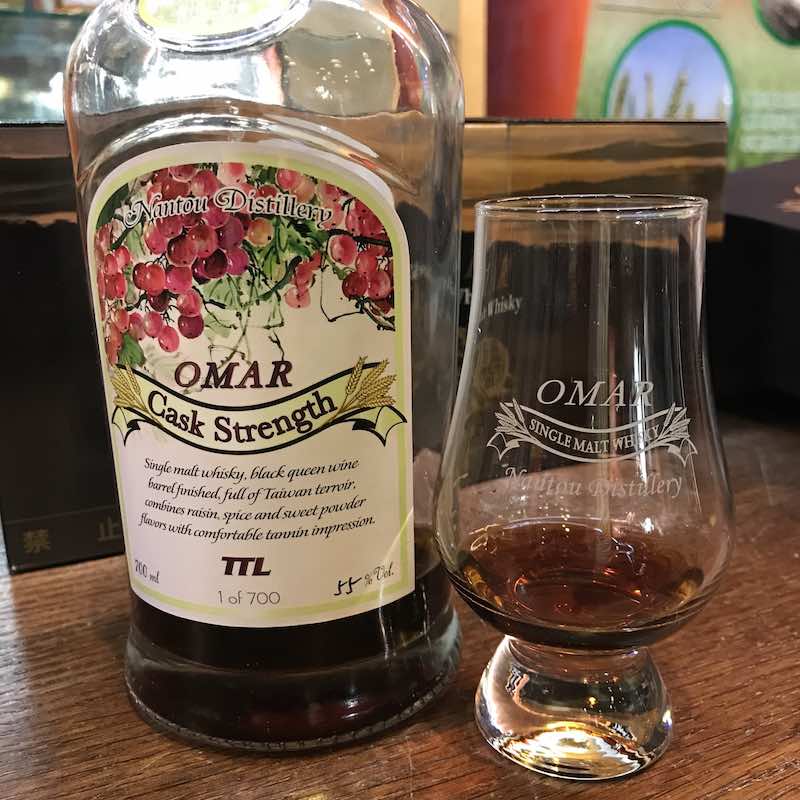
-
Cask Strength Taiwan Red Wine
-
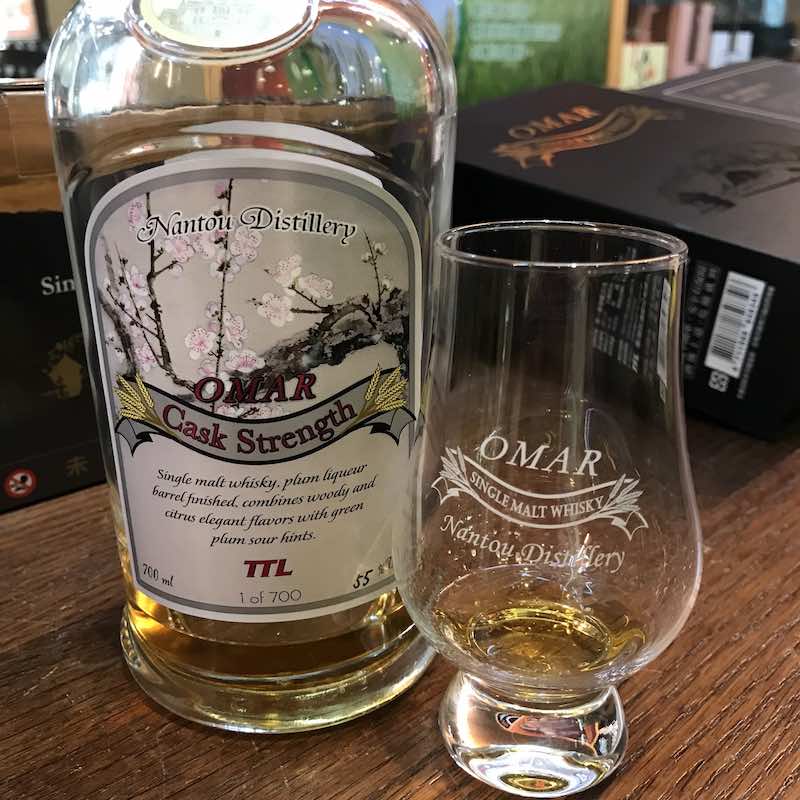
-
Cask Strength Plum
The Omar Whiskies
We had an incredible journey with Omar single malt whiskies. While we had tasted their regular single malt before, the rest of the range was new to us. The bourbon and sherry single cask Cask Strength whiskies are fast becoming a regular feature in their distillery bar. It is a pity that they are only selling the single cask whiskies in their distillery and nowhere else. Nonetheless, it was great to have a taste.
The bottle that is worth a special mention is the Omar Cask Strength Lychee Liqueur-Finished Whisky. This whisky spent most of its time maturing in a bourbon cask and then finished in a lychee liqueur cask. The finish created a sweet lychee nose and palate and lengthed the finish beautifully. It was a limited release of 700 bottles and a one-off experiment from the distillery.
The nose boasts of strong honey notes with some vanilla and lychee notes. The nose continues into the palate, with lychee, vanilla and warm spice in the mouth and throat. Sweet honey lingers at the back of the throat after swallowing. The long finish holds honey sweetness with hints of lychee in the background.
The End of the Visit
Omar is indeed a hidden gem in Taiwan and one which we should pay more attention to. If you are heading to Taiwan and wants to visit the distillery, be sure to call ahead and ask them for their schedule of distillery tours. As they are unlikely to host impromptu tours as they did for us (we were lucky!), it is safer to call ahead if you want to see their facilities. We hope this has been an exciting read for you and thank you for staying with us in this long post!
Until next time folks! We will be back with more!
Like what you have just read?
